Search results for: 'bronze'
-
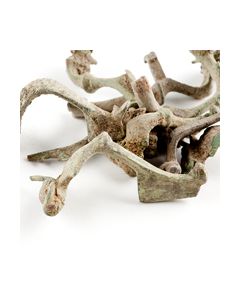 10 römische Fibeln aus Pannonien
10 römische Fibeln aus PannonienDiverse Typen, meist Kniefibel oder ähnliche. Bronze, gute Erhaltung, Nadeln fehlen. Ca. 3. - 4. Jh. n. Chr.
Price: on request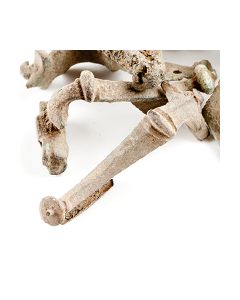 10 römische Fibeln aus Pannonien
10 römische Fibeln aus PannonienDiverse Typen, meist Kniefibel oder ähnliche. Bronze, gute Erhaltung, Nadeln fehlen. Ca. 3. - 4. Jh. n. Chr.
Price: on request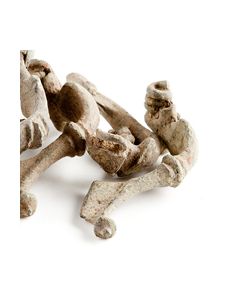 10 römische Fibeln aus Pannonien
10 römische Fibeln aus PannonienDiverse Typen, meist Kniefibel oder ähnliche. Bronze, gute Erhaltung, Nadeln fehlen. Ca. 3. - 4. Jh. n. Chr.
Price: on request 10 römische Fibeln aus Pannonien
10 römische Fibeln aus PannonienDiverse Typen, meist Kniefibel oder ähnliche. Bronze, gute Erhaltung, Nadeln fehlen. Ca. 3. - 4. Jh. n. Chr.
Price: on request 10 römische Fibeln aus Pannonien
10 römische Fibeln aus PannonienDiverse Typen, meist Kniefibel oder ähnliche. Bronze, gute Erhaltung, Nadeln fehlen. Ca. 3. - 4. Jh. n. Chr.
Price: on request Roman specillum
Roman specillumThe so-called specillum is a surgical probe. It was standard issue for roman doctors. Similar probes are still in use today. 1st to 4th cent. AD.
Price: on request Protogeld in Ringform, diverse Ausprägungen
Protogeld in Ringform, diverse Ausprägungen13 Ringgeldexemplare und ein Pelta-Amulett. Exzellent erhalten, mit schöner Fundpatina. In dieser Formenvielfalt selten angeboten.
Price: on request Keltisches Protogeld in Ringform
Keltisches Protogeld in RingformUngewöhnliches Belegstück dieser frühesten Währungsform, verziert durch drei Doppelkugeln. Exzellenter Zustand mit schöner Patina.
Price: on request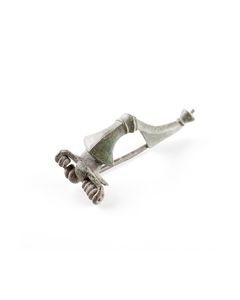 Römische Kräftig Profilierte Fibel
Römische Kräftig Profilierte FibelFibeltyp der späten römischen Kaiserzeit, sogenannte kräftig-profilierte Fibel. 1. bis Mitte 3. Jh. n. Chr., 66mm lang, in museumswürdiger Erhaltung.
Price: on request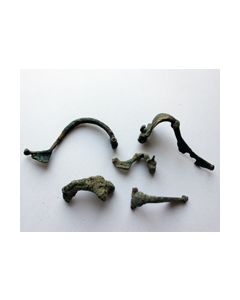 Restbestand - 5 römische Fibeln aus Pannonien
Restbestand - 5 römische Fibeln aus PannonienDiverse Typen. Bronze, gute Erhaltung, Nadeln fehlen. Ca. 3. - 4. Jh. n. Chr. Letzte 5 Fibeln aus dem beliebten Lot.
Price: on request Römische Scheibenfibel in Millefiori-Technik
Römische Scheibenfibel in Millefiori-TechnikKunstvolle Fibel aus der Kaiserzeit. Großartiges Beispiel für die antike Millefiori-Technik, die erst wieder in der Neuzeit aufgegriffen und von venezianischen Glaskünstlern zu einer neuen Blüte geführt wurde.
Price: on request Römische Kniefibel
Römische KniefibelAntike Gewandnadel vom Typ der Kniefibeln. Körper aus schön patinierter Bronze, 35mm lang. 2. Jh. n. Chr., römische Kaiserzeit.
Price: on request Roman surgical probe made of silver
Roman surgical probe made of silverThe so-called specillum was standard issue for roman doctors. Similar probes are still in use today. Ancient surgical instruments made of silver are extremely rare.
Price: on request Large Etruscan bucchero oinochoe from Orvieto
Large Etruscan bucchero oinochoe from OrvietoPerfectly preserved, impressive jar. Never damaged or restored. Worth the exhibition in a museum. From the old German collection Dr. Tillmann. Coming with an Art Loss certificate.
Price: on request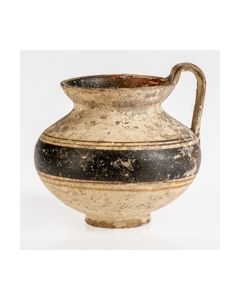 Perfectly preserved hellenistic Chytra from Magna Graecia
Perfectly preserved hellenistic Chytra from Magna GraeciaFrom a German collection, acquired 1970 from Louis Meier, UK (presumably a gallery located in London)
Price: on request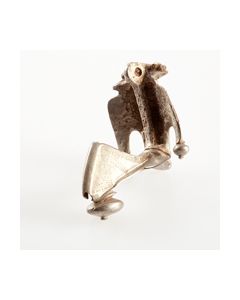 Kräftig profilierte Silberfibel, 2. bis 3. Jh. n. Chr.
Kräftig profilierte Silberfibel, 2. bis 3. Jh. n. Chr.Römische Fibel vom Typ der kräftig profilierten Fibeln. Massives Silber, 34,2g, 100 bis 250 n. Chr. Museumswürdiger Zustand.
Price: on request Roman silver fibula
Roman silver fibulaInteresting type of brooch from the Roman Imperial period. Nice specimen made of silver.
Price: on request Etruscan Vetulonia type helmet
Etruscan Vetulonia type helmetFrom the possession of New York City antiquities dealer Sumner Healey, who was made famous by Berenice Abbott's scenic photograph from 1936.
€18,000 Keltische Fibel der Latènezeit
Keltische Fibel der LatènezeitAntike Gewandnadel aus Bronze. Variante der Jezerine-Typ-Fibeln, vermutlich aus Süddeutschland, 1. Jh. v. Chr.
Price: on request Römische Silberfibel aus Pannonien
Römische Silberfibel aus PannonienGewandnadel vom Typ der kräftig profilierten Fibeln bzw. der Trompetenfibeln. Spezifische Variante der Jahre 200 bis 250 n. Chr. aus den pannonischen Provinzen.
Price: on request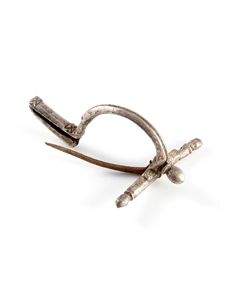 Römische Zwiebelknopf-Fibel aus Silber
Römische Zwiebelknopf-Fibel aus SilberBeliebter Fibeltyp des 3. und 4. Jh. n. Chr. Typischerweise von römischen Männern getragen. Der Träger dieser Fibel aus Silber hatte sicher eine gehobene soziale Stellung.
Price: on request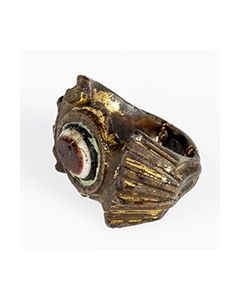 Roman finger ring with imitated agate
Roman finger ring with imitated agateMassive gold plated finger ring dating to the Late Roman Imperial period. The ring impresses with a particularly nice multi-layer glass gem in red, white and black.
Price: on request Early Villanovan Amphoriskos
Early Villanovan AmphoriskosImpressive impasto vessel with nice decorations. Including TL analysis report.
Price: on request Eisenzeitliche, europäische Fibel
Eisenzeitliche, europäische FibelHervorragend erhaltene, keltische Bronzefibel aus der Eisenzeit, 6. bis 3. Jh. v. Chr. Früher Fibeltyp in schöner Erhaltung.
Price: on request Frühe, europäische Fibel
Frühe, europäische FibelHervorragend erhaltene, keltische Bronzefibel aus der Eisenzeit, 6. bis 3. Jh. v. Chr. Großartiges Beispiel für einen der frühesten Fibeltypen.
Price: on request Frühe, europäische Fibel
Frühe, europäische FibelVollständig erhaltene, keltische Bronzefibel aus der Eisenzeit, 6. bis 3. Jh. v. Chr. Großartiges Beispiel für einen der frühesten Fibeltypen.
Price: on request Rechteck-Fibel aus dem 2. bis 3. Jh.
Rechteck-Fibel aus dem 2. bis 3. Jh.Antike römische Brosche. Dekorierte Platte mit Resten von Email. Typ aus dem 2. bis 3. Jh. n. Chr., 20mm x 33mm.
Price: on request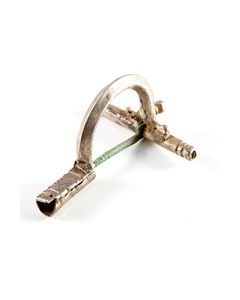 Römische Zwiebelknopf-Fibel aus Silber
Römische Zwiebelknopf-Fibel aus SilberBeliebter Fibeltyp des 3. und 4. Jh. n. Chr. Typischerweise von römischen Männern getragen. Der Träger dieser Fibel aus Silber hatte sicher eine gehobene soziale Stellung.
Price: on request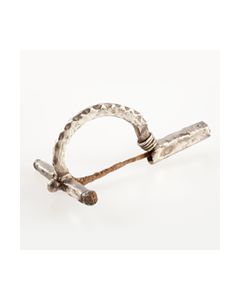 Silberne Armbrust-Fibel um 300 n. Chr.
Silberne Armbrust-Fibel um 300 n. Chr.Römische Fibel vom Typ der Armbrust-Fibeln. Massives Silber, 14,6g, 280 bis 320 n. Chr. Hervorragender Zustand.
Price: on request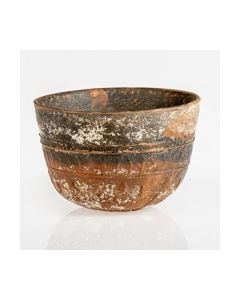 Megarian bowl with rich floral decoration
Megarian bowl with rich floral decorationPerfectly preserved and finely worked piece from a German collection in which it was acquired in the early 1970s.
Price: on request Römische Zwiebelknopffibel
Römische ZwiebelknopffibelMassive Zwiebelknopffibel aus Bronze. 23,2 Gramm, aus dem 4 Jh. n. Chr. Ungewöhnliche, kantige Zwiebelknopfverzierung.
Price: on request Roman intaglio with goddess of victory
Roman intaglio with goddess of victoryThe glass paste features Victoria writing the names of victors in battle on a large shield.
Price: on request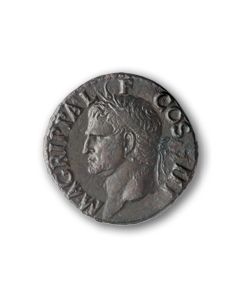 As des Agrippa
As des AgrippaAV: Kopf mit corona rostrata; RV: Neptun mit Delphin. Kabinettstück in vorzüglicher Erhaltung mit toller gleichmäßiger brauner Patina.
Price: on request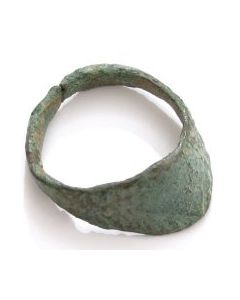 Bogenspannring für den Daumen
Bogenspannring für den DaumenFingerring aus Bronze, Hilfe zum Spannen des Bogens. Verwendet von Osteuropäischen Völkern oder Byzantinern, Spätantike bis frühes Mittelalter.
Price: on request Marc Antony legionary Denarius from Wishanger hoard
Marc Antony legionary Denarius from Wishanger hoardFound 2021 in East Hampshire, UK. Best condition of the five Marc Antony denarii in the hoard. The hoard is a very impressive proof of the fact that coins were in circulation for up to several centuries in the Roman era.
Price: on request Julius Caesar Denarius from Wishanger hoard
Julius Caesar Denarius from Wishanger hoardElephant trampling on horned snake. Found 2021 in East Hampshire, UK. The hoard is a very impressive proof of the fact that coins were in circulation for up to several centuries in the Roman era.
Price: on request

